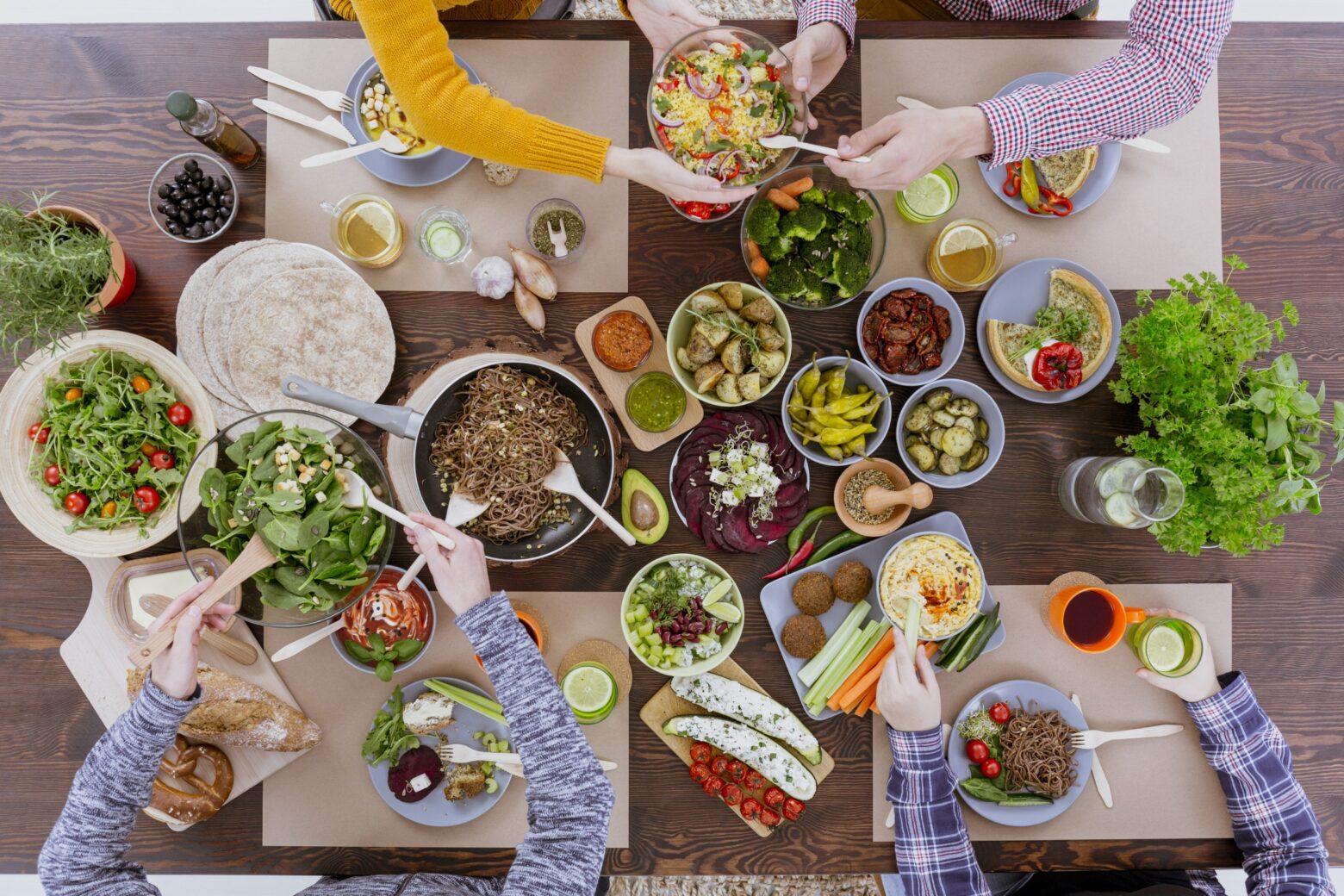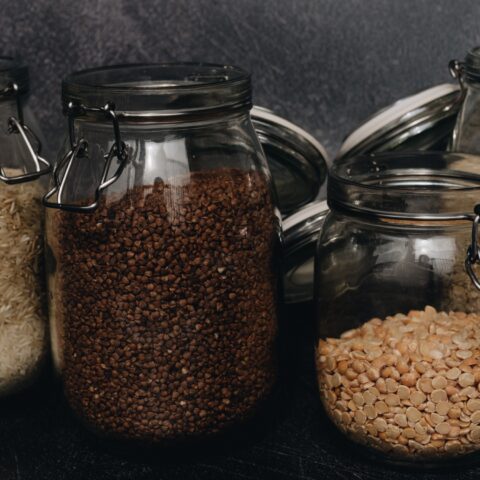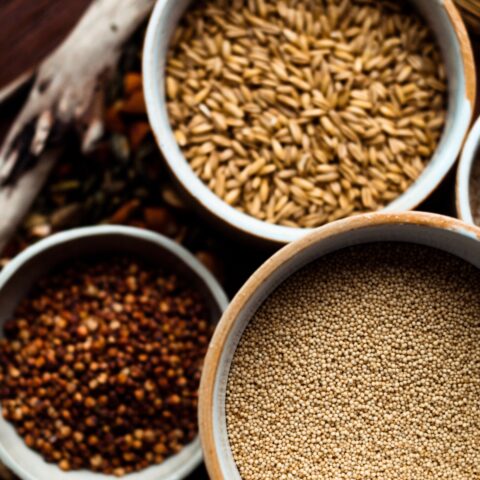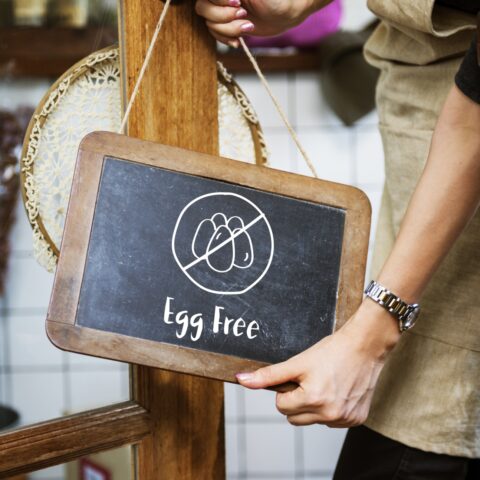Hidden Gluten in Foods: What to Watch for and Why It Matters

What You’ll Learn
Gluten isn’t just in bread and pasta. It can show up in salad dressings, spice blends, and even French fries. In this article, you’ll learn:
- What gluten is exactly, and why it can cause so many problems for some people, but not others.
- Why gluten has a bad reputation in the U.S.
- If going gluten-free is actually healthier.
- How you can spot hidden sources of gluten in your kitchen and on the go.
Gluten affects individuals differently. Most heavily impacted are the estimated 1.4% of the global population with celiac disease,1 though upwards of 83% of people with celiac remain undiagnosed, according to the National Celiac Association.2
Besides celiac disease, people can face dermatitis herpetiformis, “silent” celiac disease (asymptomatic), refractory celiac disease (symptoms remain after going gluten free), wheat allergy, and non-celiac gluten sensitivity (NCGS), all of which create discomfort in the body when gluten is eaten.
Because The Paleo Diet® does not require strict adherence 100% of the time, there may be occasions where glutenous foods are consumed, despite our foundation as a grain-free lifestyle. For some, eating gluten can lead to serious health issues, while others may experience mild discomfort. Either way, understanding gluten’s role in our diet is crucial for making informed dietary choices.
What Is Gluten?
Gluten is a group of proteins found in wheat, barley, rye, and triticale. It gives dough its elasticity and helps it rise. Gluten appears in everyday staples like bread, pasta, cereals, crackers, and baked goods. It shows up under different names such as durum, semolina, farina, spelt, farro, or kamut. And it’s present in malt flavoring, beer, soup, and yeast-containing products due to barley.
Beyond the obvious sources, gluten can hide in unexpected places, such as soy sauce, salad dressings, gravies, and even licorice or spice blends. Kantha Shelke, PhD, CFS, says packaged foods, even those that don’t seem grain-based, are an often overlooked and surprising source of hidden gluten in the American diet. These foods can frequently contain gluten as a stabilizer, thickener, or flavor enhancer.
“You don’t realize how many products gluten is in until you have to look for it,” says Chris Rich, CEO and Executive Director of National Celiac Association.
How Does Gluten Affect People with (or without) Celiac Disease?
When someone with celiac disease eats gluten, the body launches an autoimmune response, where it attacks the gluten.3 It blunts the villi in the small intestine, affecting a person’s ability to absorb nutrients from food properly, says Rich. Rich adds that it can take just one particle the size of a crumb to set off someone’s autoimmune reaction.4
NCGS, on the other hand, does not involve an immune response or damage to the intestines, but can still cause significant digestive, neurological, and skin symptoms.
While celiac disease is significantly different from other gluten conditions, some of the symptoms are shared, such as digestive issues, skin reactions, and joint and muscle issues. Being aware of how these symptoms may relate to your diet can empower more mindful food choices.
Is Gluten Bad for Everyone?
Dr. Shelke says there is a common misconception that gluten is harmful to everyone, but it isn’t.
With that said, wheat can set the stage for unwanted inflammation and disease in myriad ways. For example, zonulin is a protein that regulates the permeability of the tight junctions in the small intestine. It has the ability to break down the intestinal barrier and increase permeability, causing a “leaky gut.” One of the powerful activators of the zonulin system is gliadin, the main protein component of gluten.
While gluten is not inherently harmful to everyone, certain individuals—such as those with celiac disease or non-celiac gluten sensitivity—must avoid it. For others, reducing gluten intake may lead to improved well-being, but it’s most important to focus on overall dietary quality.
How to Spot Hidden Gluten in Everyday Foods
With only a 10 mg threshold for people with celiac disease,5 identifying hidden gluten is critical for safety, especially when eating out or buying processed foods. Below are a few tips to stay safe.
Learn to Read Labels
In the U.S., the FDA allows products labeled “gluten free” to contain less than 20 parts per million of gluten, but there is no regulation on gluten-free labels. Rich suggests, rather than blindly trusting a gluten-free label, consumers look for a trusted certification logo. If that’s not an option, check the box for “contains wheat” and be willing to read the full list of ingredients if necessary.
One important point to remember about parts per million is that it is a unit of concentration, not an amount, so it depends on how much of the food is consumed. For instance, you would have to eat at least 17 slices of gluten-free bread in order to hit the 10 mg threshold.
Watch for Tricky Ingredients
Ambiguous terms like “modified food starch,” “natural flavors,” or “hydrolyzed vegetable protein” may contain gluten. Rebecca Berry, who was diagnosed with celiac disease over 20 years ago, shares that she accidentally “glutened” herself with a seasoning she bought in New Orleans. It had “natural flavoring” in it, and she started breaking out in rashes before realizing the cause.
Recognize Common Foods with Hidden Gluten
Foods to watch out for include condiments, spices, sauces, processed meats and meat substitutes, snack foods, and soups and broths. “French fry coating is my biggest one,” Berry says. “If it’s got some sort of crispiness, I know it’s flour.”
Understand Cross-Contamination Risks
Keep an eye out for preparation methods and shared equipment in restaurants and at home. Cross-contact can make even “gluten-free” food dangerous. Berry says you’re taking a risk every time you go out to a restaurant unless you’re in a 100% dedicated facility, but you can learn signs to look out for to reduce your risks.
Utilize Reliable Resources
Look for certifications from reputable organizations and engage with organizations like the National Celiac Association, which can provide up-to-date information and support for product guides, food lists, and restaurant tips to help you shop and dine safely. You can also use apps like Fig that let you scan barcodes to detect gluten in real time.
While the FDA issued a final rule defining “gluten free” for food labeling in 2013,6 it’s always smart to pay careful attention to what you are eating if you are trying to avoid gluten, especially for fermented or hydrolyzed foods. Dr. Shelke advises, “Just because a product is naturally gluten free doesn’t mean it’s safe, unless it was processed in a gluten-free facility.”
Is Gluten in the U.S. Worse Than Elsewhere?
Many people report feeling better after eating gluten-containing foods abroad, particularly in Europe, which raises the question: Is gluten in the U.S. actually worse? Shelke says these reports are largely anecdotal, and to date, scientific studies have not confirmed a consistent difference in gluten tolerance based purely on geography.
While gluten in the U.S. isn’t necessarily “worse,” how it’s used in the food system may be. The gluten load in U.S. foods is heightened by wheat that has been selectively bred for higher yield and baking performance, as well as rapid production with added gluten in the baking processes.
People may feel better eating gluten in Europe because the foods are less processed, prepared differently, and consumed with fewer additives. Shelke says, “While there’s no solid scientific evidence that European gluten is inherently more tolerable, a combination of agricultural, culinary, and lifestyle differences may help explain individual experiences.”
How to Cook for Someone with Celiac Disease
Cooking for someone with celiac disease requires careful attention to avoid cross-contamination. Here are some tips our experts offer to keep a gluten-free-friendly house:
- Designate space in the pantry for gluten-free food. A higher shelf is better, so there is no settling downward of gluten-filled items.
- Get a separate toaster and have dedicated utensils and pots for gluten-free cooking to avoid cross-contamination.
- Replace sponges and dishcloths, which may harbor gluten particles when washing dishes.
- Use squeeze bottles for condiments when possible or separate jars to avoid “double-dipping” crumbs.
- Stay smart about seasonings and add-ons and always read the label when in doubt.
- Stock your kitchen with naturally gluten-free ingredients and choose certified gluten-free products when possible.
Perhaps most importantly, Rich says don’t isolate those who eat gluten-free at home. Be mindful of gluten, but don’t remove the community element from eating. Berry adds, “Food is so much more than just food. It’s a relationship. It’s memories.” You don’t want anyone to miss out on these experiences.
Living without Gluten
While gluten isn’t a concern for everyone, recognizing where it hides and how it can affect the body empowers us to make better choices, especially when following a whole-food, minimally processed diet like The Paleo Diet. For those with celiac disease or gluten sensitivity, awareness is essential, but with the right tools and support, living gluten-free can be both doable and deeply nourishing.
FAQ
Can you be gluten sensitive without having celiac disease?
Yes. This is called non-celiac gluten sensitivity (NCGS). It involves symptoms without the autoimmune markers of celiac.
Is gluten really worse in the United States?
Many believe U.S. wheat is more inflammatory, but evidence points more to processing and wheat varieties than gluten itself.
What ingredients should I avoid when cooking gluten-free?
Avoid wheat, barley, rye, malt, and soy sauce (which are already non-Paleo ingredients). Hidden gluten can also show up in spice blends and sauces. The Paleo Diet is naturally gluten free because it is grain free, which also helps to avoid cross-contamination from the processing of similar foods like corn or oats.
What are some easy swaps for gluten-containing ingredients?
| INSTEAD OF… | TRY… |
| Soy sauce | Coconut aminos* |
| Wheat flour | Arrowroot flour,* coconut flour,* or almond flour* |
| Breadcrumbs | Crushed walnuts or pecans |
| Wheat- or legume-based pasta | Spiralized veggies, kelp or konjac noodles, or heart of palm pasta |
| Beer | Sulfite-free red wine,* gin,* tequila,* or mocktails |
| Malt vinegar | Apple cider vinegar |
| Crackers | Salt-free nuts, sliced veggies, or homemade crackers* |
| Baking powder (with starch) | 1 part baking soda + 2 parts cream of tartar + 2 parts arrowroot powder |
Does gluten cause inflammation in everyone?
No. For most people, gluten does not cause inflammation. However, individuals with celiac disease or NCGS may experience immune or inflammatory responses after gluten exposure.
References
- Celiac Disease Foundation. (2018). Global prevalence of celiac disease: Systematic review and meta-analysis. https://celiac.org/wp-content/uploads/2018/06/Global-prevalence-of-celiac-disease_GGH_2018.pdf
- National Celiac Association. (2021). Celiac disease quick facts brochure. https://nationalceliac.org/wp-content/uploads/2021/09/NCA-Quick-FACT-Brochure-2021-Web-pages-2.pdf
- Mayo Clinic Staff. (n.d.). Celiac disease: Symptoms and causes. Mayo Clinic. https://www.mayoclinic.org/diseases-conditions/celiac-disease/symptoms-causes/syc-20352220
- National Celiac Association. (n.d.). Understanding gluten levels. https://nationalceliac.org/celiac-disease-questions/understanding-gluten-levels/
- Catassi, C., Fabiani, E., Iacono, G., D’Agate, C., Francavilla, R., Biagi, F., … Fasano, A. (2007). A prospective, double-blind, placebo-controlled trial to establish a safe gluten threshold for patients with celiac disease. The American Journal of Clinical Nutrition, 85(1), 160–166. https://pubmed.ncbi.nlm.nih.gov/17209192/
- U.S. Food and Drug Administration. (2013, August 5). Food labeling: Gluten-free labeling of foods. Federal Register. https://www.federalregister.gov/documents/2013/08/05/2013-18813/food-labeling-gluten-free-labeling-of-foods
Tiffany Nieslanik
Tiffany is a freelance writer covering health and wellness, parenting, lifestyle, and consumer technology. With a passion for research-backed storytelling and a personal interest in food as medicine, she brings a thoughtful approach to writing about wellness and nutrition.
More About The Author




